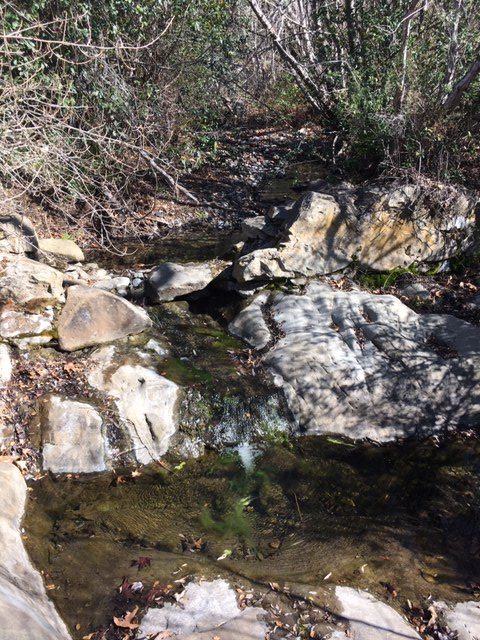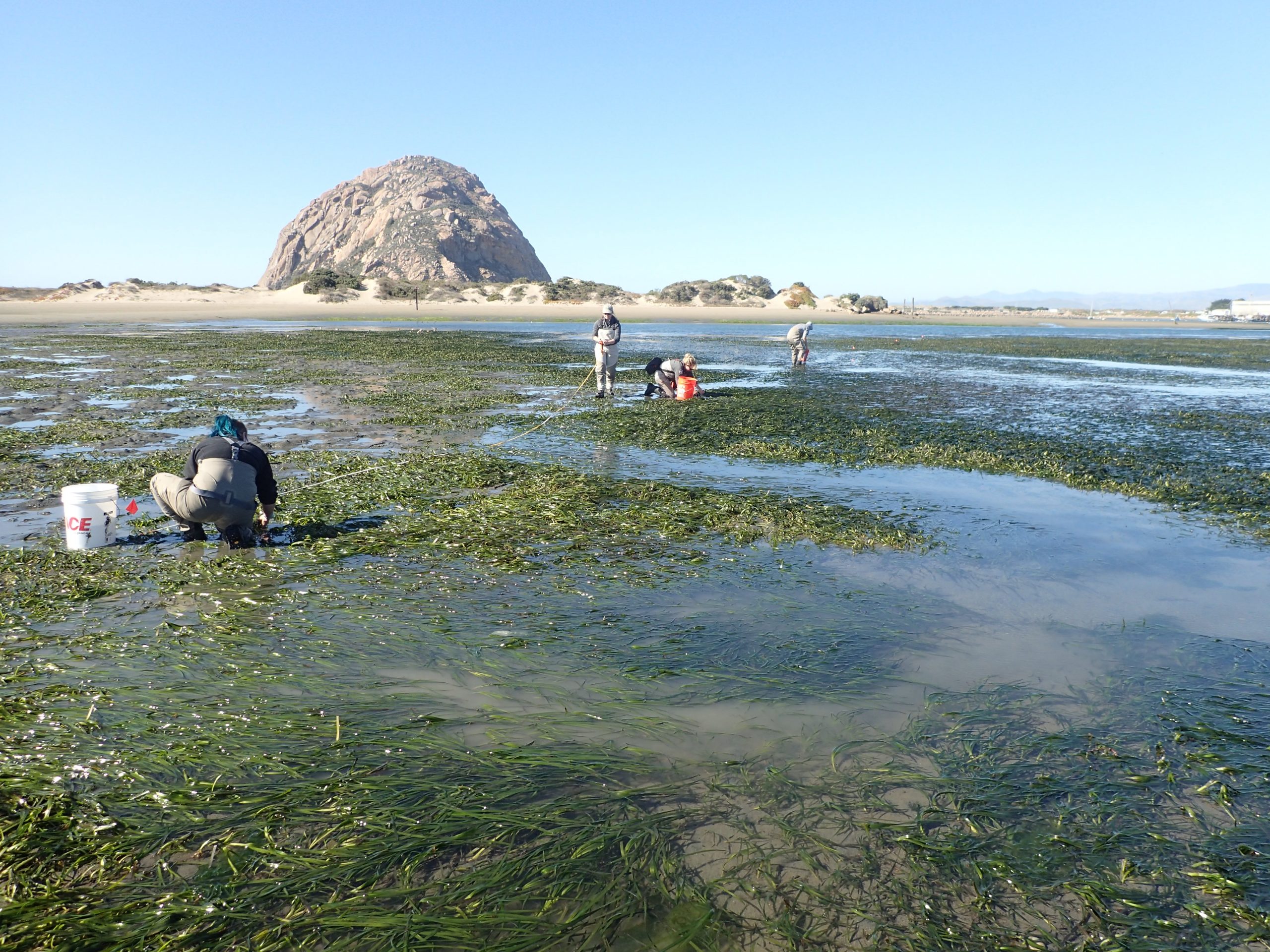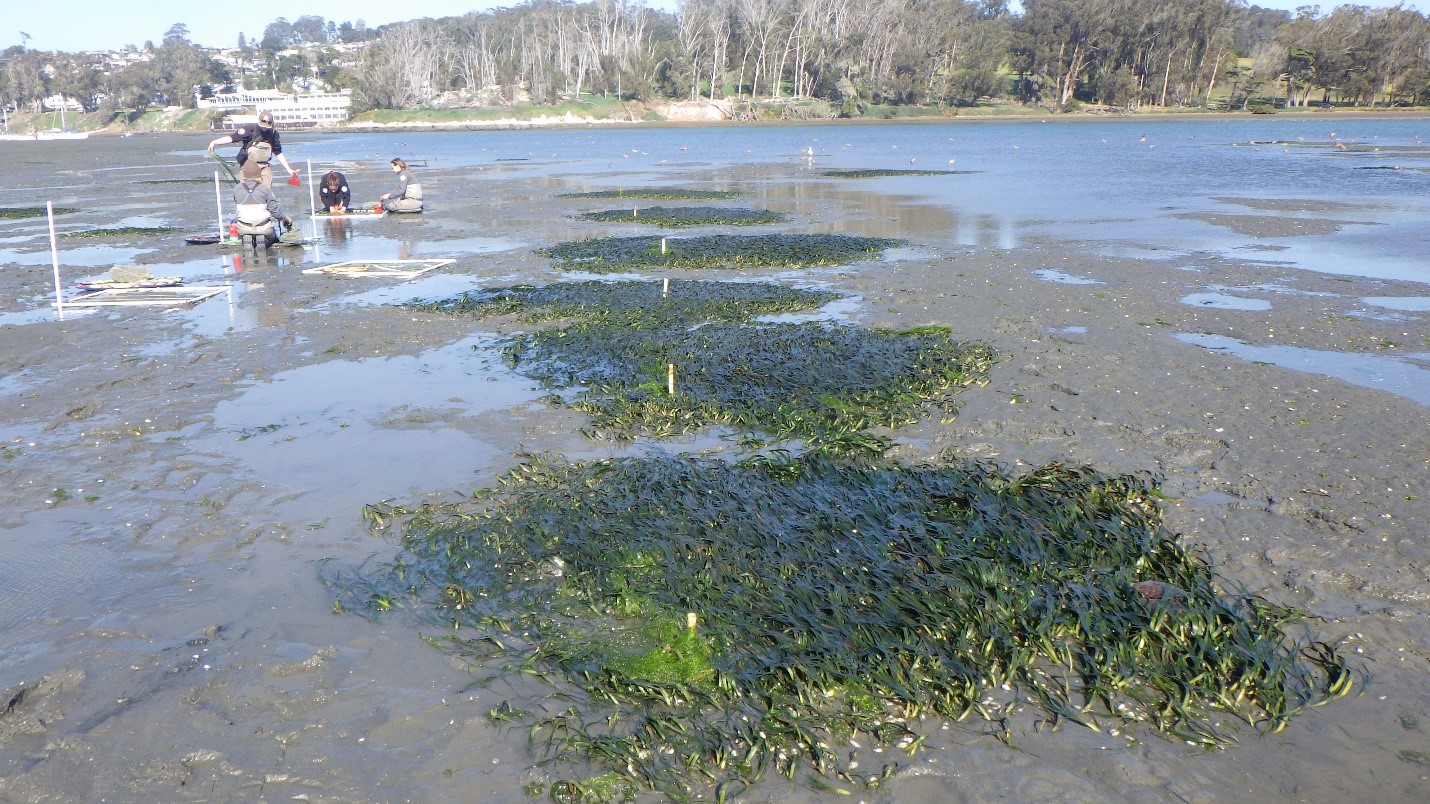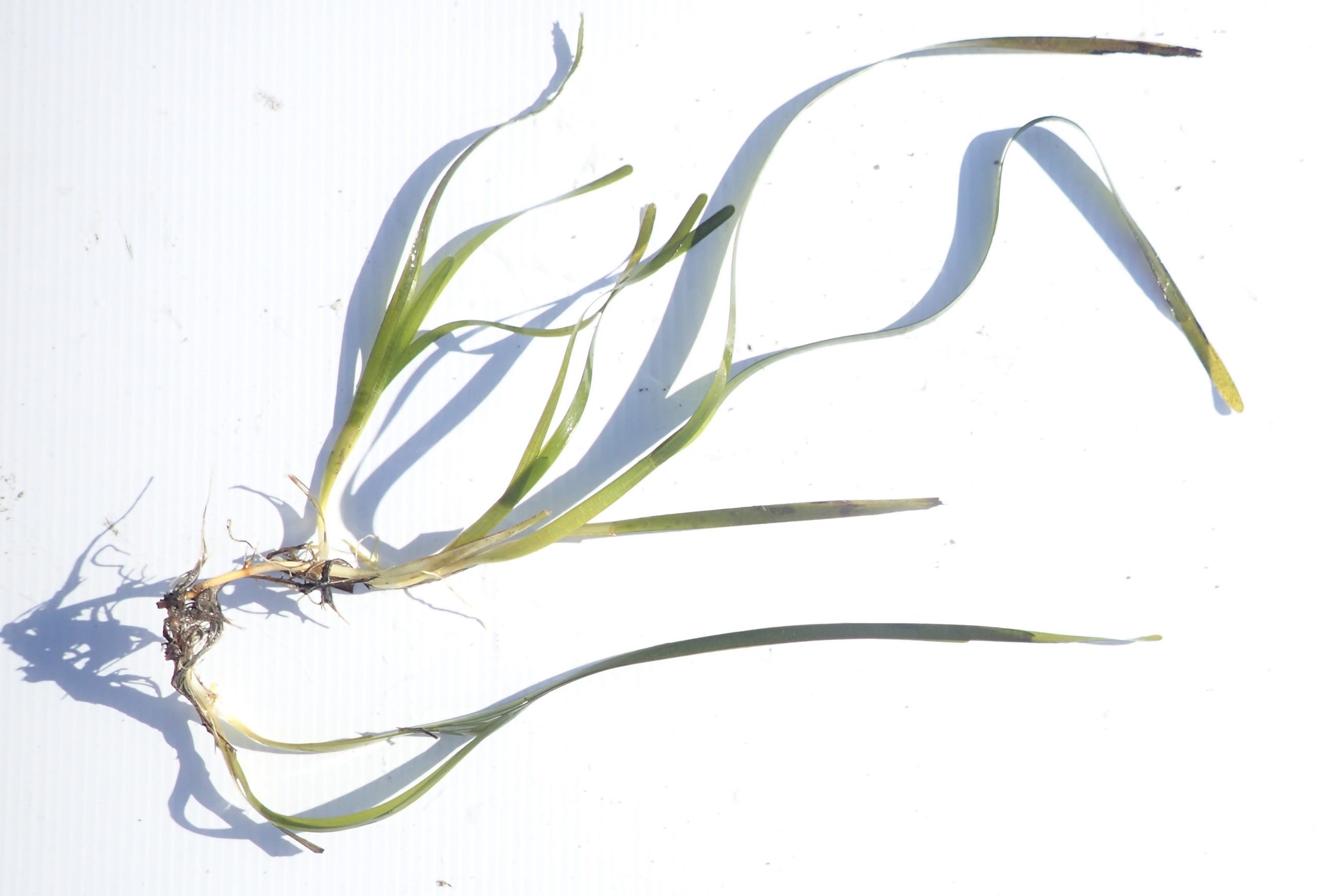Creek Water Quality
February was a month marked with warm temperatures and low precipitation here in the Morro Bay watershed. In February 2019, the San Luis Obispo CIMIS rain gauge received 7.48 inches of rain, with 57% of days during the month recording rainfall. Comparatively, this year’s rainfall has been much lower, with a February monthly total of 0.01 inches of rain and only one day with rainfall as of February 28. Low precipitation levels have led to low flows in our creeks, as can be seen in this picture of Dairy Creek, a tributary of Chorro Creek.

The amount of flow within a stream is a critical component for the success of species such as our local South-Central California Steelhead trout (Oncorhynchus mykiss) (CDFW, 2014). While natural shifts in climate from year to year are expected, low flow conditions have the potential to prevent steelhead from accessing their spawning grounds, and increase their physiological stress (CDFW, 2015). We’re crossing our fingers for rain in March!
Eelgrass
Thanks to the sunny weather, eelgrass restoration work has been all the more enjoyable. Below, you can see a crew of some of our volunteers and staff harvesting eelgrass from an existing bed to be replanted in one of our restoration plots within the estuary.

Twenty volunteers from both the community and the Watershed Stewardship Program have supported this year’s restoration effort so far. In February, harvesting took place on both the north end of the sand spit as well as at Coleman Beach. (North Sandspit pictured above). Harvested eelgrass was then planted using a variety of methods that included tying eelgrass rhizomes to rebar or bamboo pieces and planting by hand in several feet of water by snorkelers. Eelgrass collection and planting took place over two weeks and included planting at seven sites in the mid-bay with five or six plots at each site.

Why is eelgrass so important? Eelgrass is a critical resource both here in the Morro Bay estuary and across the globe due to its role in habitat creation, sediment stabilization, and carbon sequestration (Nordlund et. al., 2017). For those of you who have been in the area, you might be familiar with the significant decline of our local population of eelgrass that began in 2007. Things have been looking more hopeful, so keep your eyes peeled for our next eelgrass report that will be released later this year. To stay connected to our current restoration efforts, check out our Facebook page.

Thanks again to all of our wonderful volunteers that help to make these projects happen! We couldn’t do it without your support.
Help protect and restore the Morro Bay estuary
- Donate to the Estuary Program today and support our work in the field, the lab, and beyond.
The Estuary Program is a 501(c)3 nonprofit. We depend on funding from grants and generous donors to continue our work. - Support us by purchasing estuary-themed gear from ESTERO. This locally owned and operated company donates 20% of proceeds from its Estuary clothing line and 100% of Estuary decal proceeds to the Estuary Program. Thank you, ESTERO!
- Purchase items from the the Estuary Program’s store on Zazzle. Zazzle prints and ships your items, and the Estuary Program receives 10% of the proceeds. Choose from mugs, hats, t-shirts, and even fanny packs (they’re back!) with our fun Estuary Octopus design, our classic Estuary Program logo, or our Mutts for the Bay logo.
Thank you for your support!